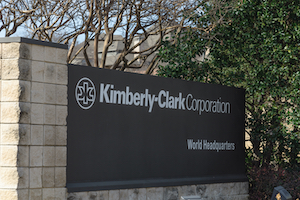 A federal judge found that the participant-plaintiffs in a $4 billion plan’s excessive fee suit failed to make their case—but gave them an opportunity to fix it.
A federal judge found that the participant-plaintiffs in a $4 billion plan’s excessive fee suit failed to make their case—but gave them an opportunity to fix it.
The suit was filed less than a year ago against the fiduciaries of the Kimberly Clark Corporation 401(k) and Profit Sharing Plan by Christina C. Seidner and Jared Mackrory, who alleged a variety of fiduciary “sins,” but primarily for paying higher fees ($78/participant) than what was paid by what they claim are comparable plans (about $30/participant), at least based on their size. At the time we commented that the suit was “short in length (36 pages)—and substance of specific allegations—and (relatively) long on assumptions and presumptions”—and it appears that a federal judge agrees.
Standards of Review
After outlining the facts in the case, U.S. District Judge Sam Lindsay spoke (Christina C. Seidner et al. v. Kimberly-Clark Corp. et al., case number 3:21-cv-867, in the U.S. District Court for the Northern District of Texas) to the legal standard for review of a motion to dismiss the case. These are pretty standard fare—and they’ve been outlined in other cases, but basically, in order to defeat a motion to dismiss pursuant to Rule 12(b)(6) of the Federal Rules of Civil Procedure, a plaintiff must plead “enough facts to state a claim to relief that is plausible on its face.”
As for plausibility, Judge Lindsay noted that “a claim meets the plausibility test “when the plaintiff pleads factual content that allows the court to draw the reasonable inference that the defendant is liable for the misconduct alleged.” He continued that the this plausibility standard “is not akin to a ‘probability requirement,’ but it asks for more than a sheer possibility that a defendant has acted unlawfully.” Moreover, he explained that, “while a complaint need not contain detailed factual allegations, it must set forth “more than labels and conclusions, and a formulaic recitation of the elements of a cause of action will not do.”
Finally, he explained that in reviewing a Rule 12(b)(6) motion, “the court must accept all well-pleaded facts in the complaint as true and view them in the light most favorable to the plaintiff”—but also noted that “in ruling on such a motion, the court cannot look beyond the pleadings.” In sum, “the ultimate question in a Rule 12(b)(6) motion is whether the complaint states a valid claim when it is viewed in the light most favorable to the plaintiff.”
The Review
However, and “after carefully reviewing Plaintiffs’ Complaint and the parties’ submissions, the court agrees, for essentially the reasons stated in Defendants’ Motion and supporting briefs,” that:
- Plaintiffs’ claims for fiduciary breaches of the duty of prudence, loyalty, and monitoring are not sufficiently pleaded for purposes of Rule 12(b)(6); and
- the allegations in Plaintiffs’ Complaint are also insufficient to establish that they have Article III standing to pursue any claim that Defendants breached their fiduciary duties by permitting the Plan’s recordkeepers to recoup fees in whole or in part through revenue sharing.
Finally, Judge Lindsay noted that the plaintiffs’ contention—basically that the shortcomings in their allegations could be resolved through a discovery process—was not a valid basis upon which to reject the motion to dismiss the suit.
On the other hand, he commented that the law as to whether the Board of Directors can be sued as a legal entity was not sufficiently briefed by either party, and that the plaintiffs’ one-sentence conclusory response in a footnote regarding its duty of loyalty claim was “woefully deficient, conclusory, and unhelpful.” He continued that “whether such a response amounted to an abandonment of their duty of loyalty claim is a close call,” but that since the plaintiffs had not previously amended their claims, “and it is unclear at this juncture whether amendment would be futile or unnecessarily delay the resolution of this action, the court will deny without prejudice Defendants’ Motion and allow Plaintiffs to amend their pleadings.”
What This Means
Basically the plaintiffs arguments here—and they were more cursory than most to warrant the editorializing in the coverage of the original suit—failed to meet a pretty low bar to proceed. Essentially, assuming everything they claimed was accurate, the court here was unable to find failures alleged sufficiently to warrant proceeding to a more elaborate discovery phase, much less trial.
That said, Judge Lindsay allowed the plaintiffs—represented by Kendall Law Group PLLC and Walcheske & Luzi LLC.—to rewrite/amend their claims sufficient to meet the standards. Will they succeed? Time will tell.

